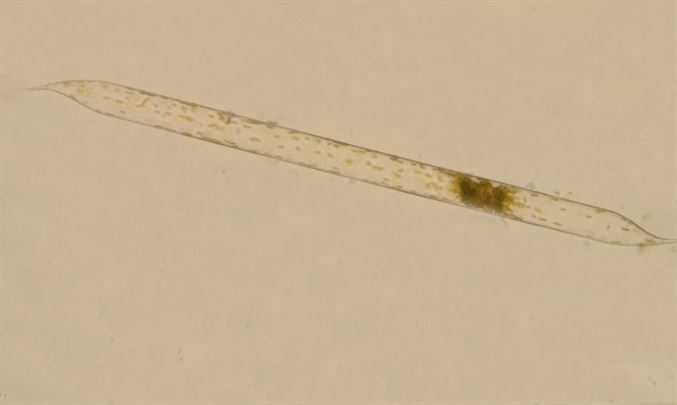The cells have a rod-shaped cylindrical form, with valves that are not oblique but more regularly conical, curving at the apex. These cells can range in diameter from 6 to 53 µm and may be nearly 1 mm in length. The intercalary bands resemble scale-like, rhombic structures, arranged in two dorsiventral rows in smaller individuals but expanding to eight or more rows in the widest forms. Imbrication lines, which are overlapping structures, can be challenging to observe. The processes on these cells are robust, decreasing in size gradually from the base to the tip, and they have a claw-like curvature, lacking wings. The cell wall is thin and weakly siliceous, punctuated very delicately. On the valves, there are 22-24 puncta in a 10 µm span, while on the intercalary bands, there are 20-23 puncta in the same distance. Small and numerous chromatophores are present within the cells.
